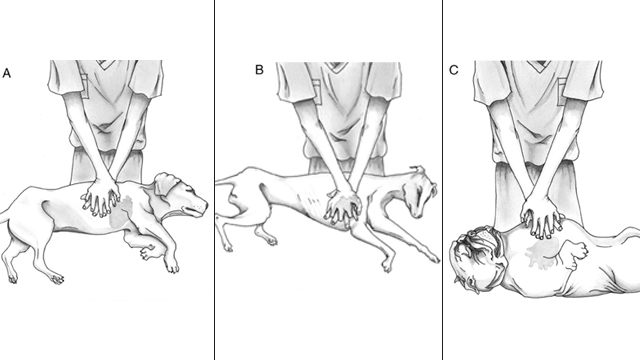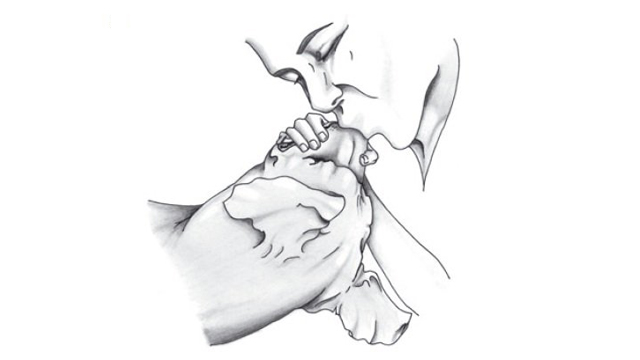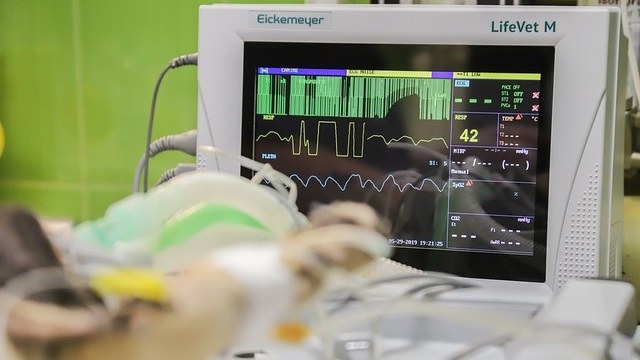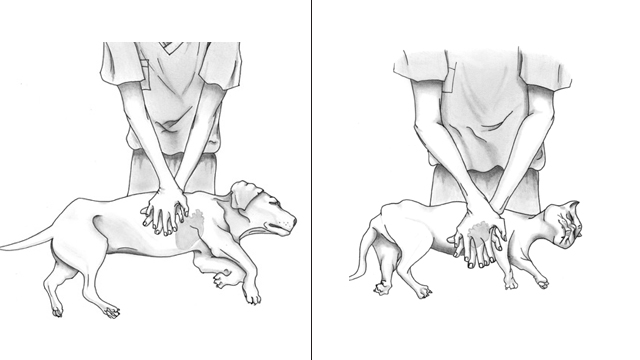How to Perform Dog CPR and Cat CPR
Truth to be told, CPR – Cardiopulmonary Resuscitation – is frequently unsuccessful. This is mainly because our pets often have an underlying medical condition that compromises a positive outcome. But in some cases, it can save lives! We all hope we never find ourselves needing to perform dog CPR or cat CPR… But still, we never know what the future holds. So why not learn the theory behind CPR? That’s what this article is all about!
Apart from situations in which pets are ill, choking is the most common event that asks for CPR and that has some chance of success. Others, such as drowning or cardiac arrest, might also require this maneuver and there is usually no time to waste! Learning the basics about CPR is quick and simple, but attending a live first-aid course is the best way to put into practice what is described below.
- CPR for pets can be lifesaving but is often unsuccessful due to underlying medical conditions.
- Choking and drowning are common situations where CPR may be needed; quick action is essential.
- Always assess the ABCs: Airway, Breathing, and Heartbeat before attempting CPR.
- Perform chest compressions followed by rescue breaths; repeat the cycle until help arrives.
- Even if CPR is successful, immediate veterinary care is crucial for the pet's recovery.
Go through the ABCs first

This is the first thing you should go through before performing dog CPR or cat CPR. It will help you know if CPR is really needed!
– Airway
Check the pet’s airway for any sign of obstruction. Pull the tongue forward and assess the throat. If needed, clear the airway using your hands or the Heimlich maneuver.
– Breathing
Verify that the pet is not breathing by moving them onto their right side and checking if the chest moves.
If it’s hard to tell, try holding a flat surface like your phone screen up in front of the pet’s nose and see if breath comes out from the nostrils.
If the pet is unconscious but breathing, do not perform CPR – take them to a vet right away instead!

Is Maven right for your pet?
Take the quiz and see how Maven can support your pet’s wellness journey.
– Heartbeat
With the pet on their right side, bend their front leg up so that their elbow touches the chest. The place where the elbow touches the ribs is where the heartbeat should be the strongest.
Placing your hand over that point is the easiest way to feel the heartbeat, but you can also look for any movement on the chest wall.
If the pet has a heartbeat but is not breathing, chest compressions are not needed. At this point, artificial respiration is all you will have to do!
However, bear in mind that if you cannot see the chest moving nor find a heartbeat, CPR with chest compressions should be done right away.
Complete CPR
Assuming you’ve assessed the situation and CPR is needed, let’s get to how to perform dog CPR and cat CPR.
Step 1 – Chest Compressions

The first step consists of chest compressions.
- Place your hands on the pet’s chest as follows:
- A) For cats, small dogs and puppies, place the heel of one of your hands directly over the pet’s heart and place your other hand directly over the first hand.
- B) For deep-chested dogs, place the heel of one hand over the widest part of the chest and place your other hand directly over the first hand.
- C) For barrel-chested dogs, place the dog on their back; place one hand over the widest part of the sternum, and your other hand directly over the first hand. Lock your elbows, and make sure your shoulders are directly above your hands.
- Compress the chest hard and fast.
- Follow the beat of the song “Staying Alive” and compress 2 times per second.
- Perform 30 chest compressions. Each compression should depress the chest by a half to two-thirds, and the chest should be allowed to return to the normal position after each compression.
Step 2 – Rescue breaths

After the compressions, move forward to the rescue breaths.
- Gently close the pet’s mouth and extend their neck to open the airway.
- Cover the pet’s nose with your mouth, and exhale until you see their chest rise.
- Exhale twice for 1 second each time, but give room for the chest to fall – 1 second will be enough.
Step 3 – Keep the cycle

- You should do a cycle of 30 chest compressions and 2 rescue breaths until the pet begins to breathe again on their own.
- Do not forget to check for breaths and heartbeats every 2 minutes.
Continue the rescue attempt until you reach a veterinary hospital or until help arrives. Even though you know your way around CPR, it’s always wise to call for expert help! If in the meantime the pet’s heartbeat and breathing returns to normal, that’s great. Nevertheless, emergency care is still needed and the pet should be taken to the vet ASAP!

Maven Pet
Health Monitor
#1 Vet-recommended pet monitor! Tracks activity, rest, respiratory rate, water intake, scratching and other health indicators 24/7
Conclusion
Whether a positive outcome is likely or not… A pet in cardiac arrest will stand a much greater chance of living if they have the luck of being assisted by a person who knows how to do CPR. We hope this article was helpful and that you’ve now learned the basics of how to perform dog CPR and cat CPR!
Maven Pet focuses on improving the quality of life of our pets with technology, using artificial intelligence (AI) to enable proactive pet care. By accurately collecting and monitoring pet data 24/7 and flagging any irregularities, Maven Pet empowers pet parents and veterinarians to stay ahead of potential health issues, ensuring the well-being and longevity of our beloved companions.





This is super inportant info every pet owner should know!